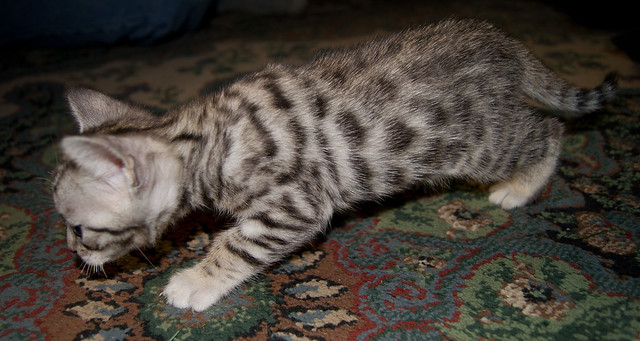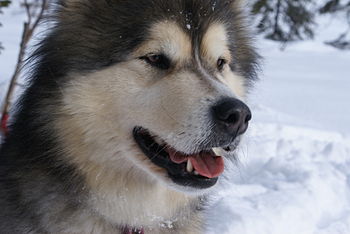 |
| Wirehaired pointing griffon (Photo credit: Wikipedia) |
Wirehaired Pointing Griffon, a gun dog, is a breed heavily favoured by huntsmen. Its ruggedness in retrieving and tracking game fowls make it an ideal companion even in rough terrain and weather. Icy waters or thick under brushes, a Wirehaired Pointing Griffon is never daunted. This is why this breed is often referred as the '4-wheel drive of hunting dogs'.
Griffons, or Griffs as some may call it, are developed in Europe by Dutch breeder. He did it by mixing German Griffons with French and German Pointers, Spaniels, Barbets and a Setter. It resulted in a breed ideal for hunting and as a house pet as well.
Griffons are medium-sized dogs. They have muscular limbs and long legs, obviously, built for running and agility. Their thick brows, beards and moustaches give them their distinctive handsome looks. Griffs, also, have rounded feet with webbed toes ideal for swimming.
They sport wiry coats that will continue to develop until they reach the mature age of three years old. To let new hair grow, they will need occasional trimming because they are a naturally low-shedding type of breeds. Coat texture may vary depending on their type of food and coat care methods. They come in a variety of colours, including steel grey with brown, white, or chestnut.
Temperament and Training of Wirehaired Pointing Griffons
Griffons are people-oriented dogs. They are highly intelligent and surprisingly very cooperative. When not in the field, they are less excitable as compared to other sporting breeds. Therefore, they are comfortable companions at home.
Wirehaired Pointing Griffon should be socialized extensively when young. This will greatly help their development toward adulthood. And owners must always take the role of a pack leader so the Griffon won't have dominance problems. As naturally dominant dogs, they will try to challenge their masters for the alpha position. If they succeed, they can be very stubborn and it will be difficult for you to manage them.
Although naturally mild-mannered when inside the house, Griffons still need daily exercise to exhaust their stored energy. When they seem overly energetic even at home, it only means that they lack the physical stimulation they direly need. They can be easily bored if not exercised regularly.
On the field, Griffons shine the brightest. They are never finicky about the terrain and weather conditions. They are courageous and persistent trackers. They are excellent swimmers and love to play in the water. Agility training is a very enjoyable activity for Wirehaired Pointing Griffons.
But it is not only in field work that Griffons thrive. They are also suitable for show ring because of their delightful obedience and superior intelligence. They are extremely eager to please and very friendly to either humans or animals. When owning Wirehaired Pointing Griffons, it is imperative to keep them physically and mentally fit. Giving them a job is absolutely beneficial for them. Griffons, however, are not suitable for apartment living. They need wide spaces, like backyards.
If your household has spacious yards for the Griffons and you exercise them well enough, they are easily the most affectionate, and good-natured dogs to be around.




















